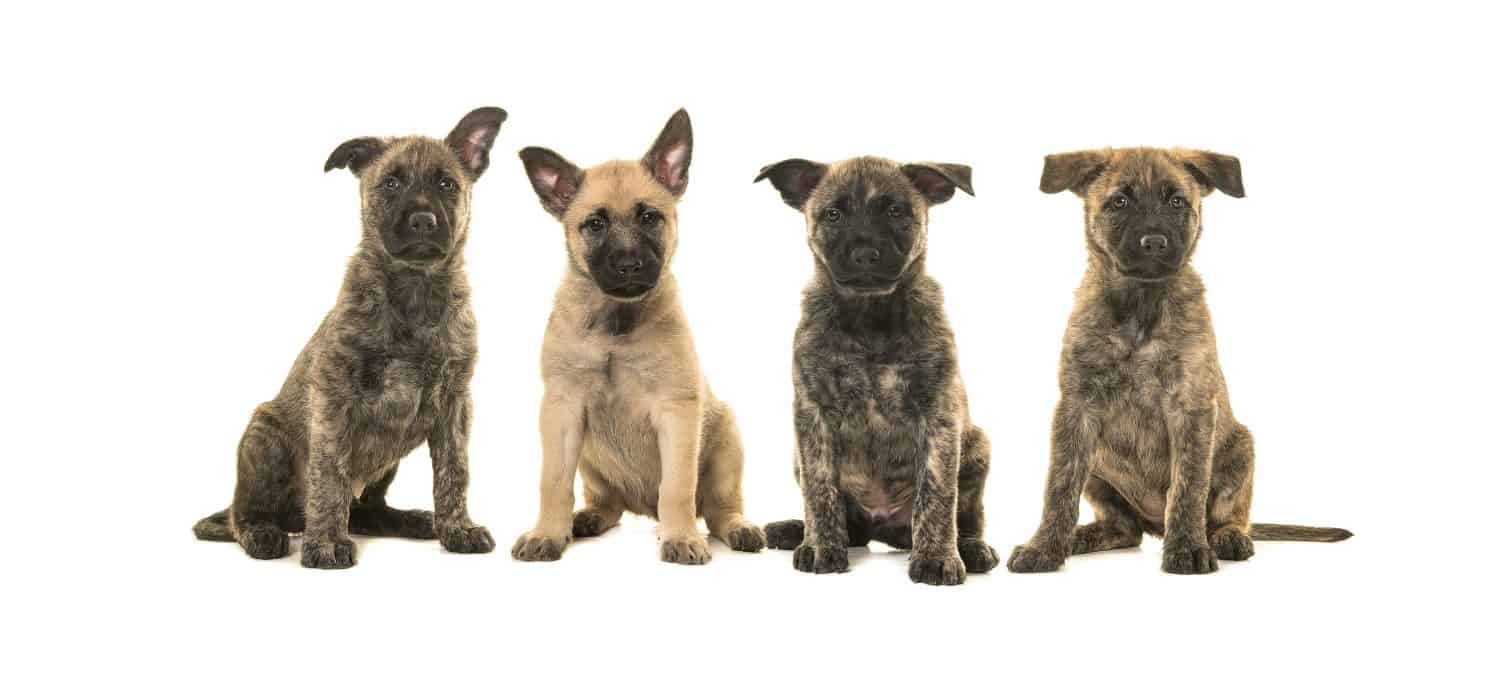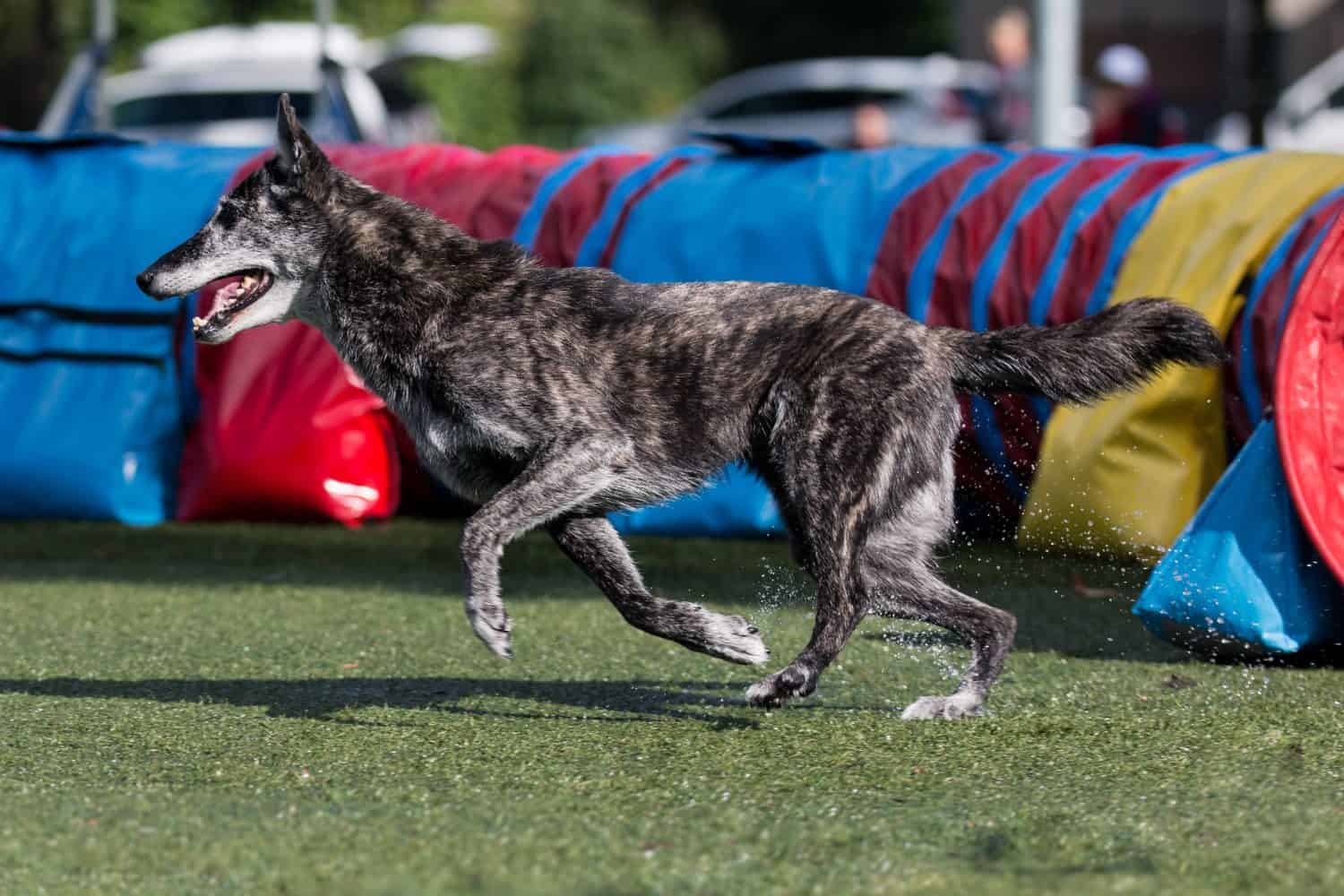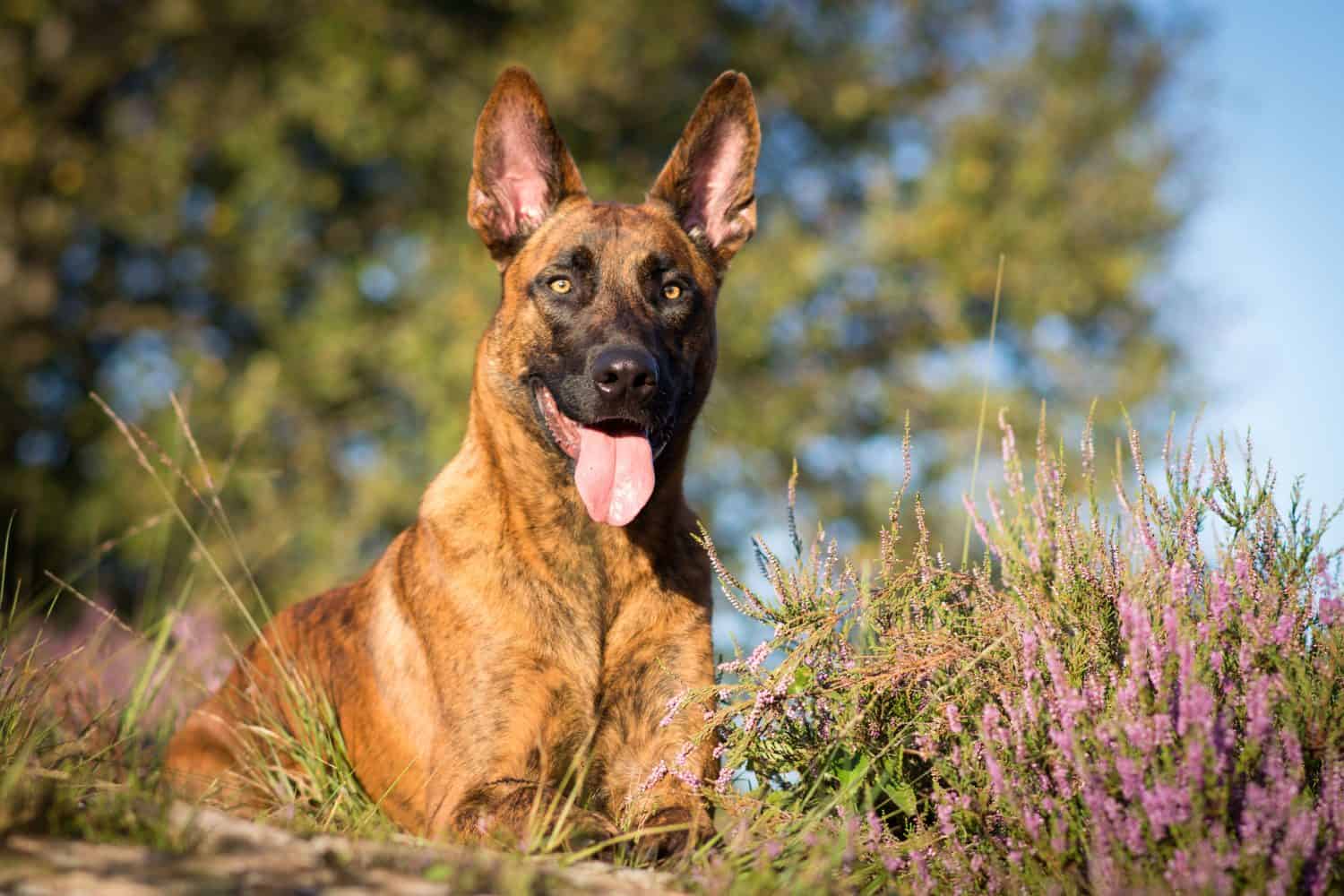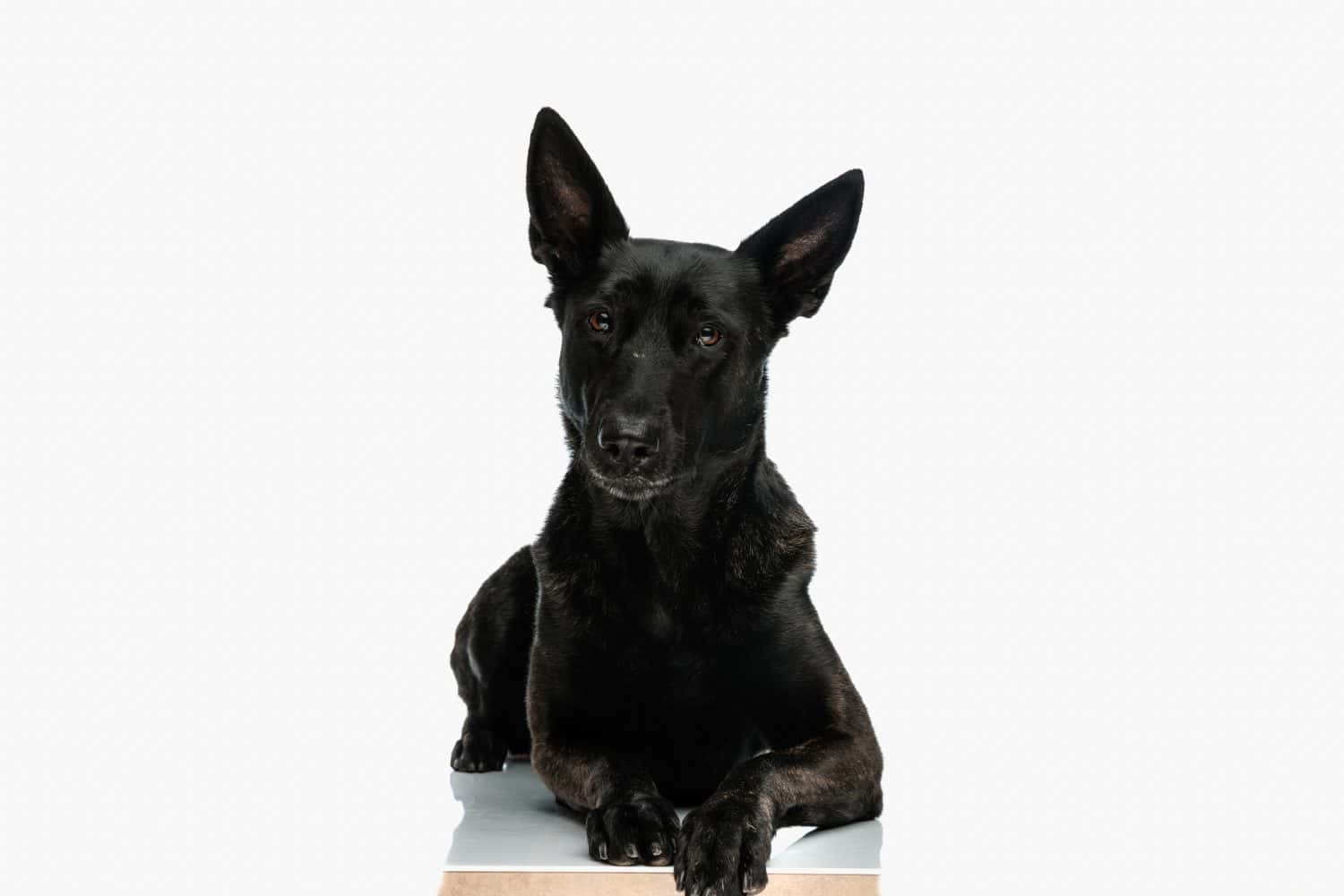The Dutch shepherd is a beautiful dog breed that originated in the Netherlands during the 19th century, although they were likely running around Dutch farms for much longer. Farmers needed an all-around dog that could herd the sheep, protect the family, and keep livestock out of areas where they didn’t belong. As a result, this breed is smart, easy to train, and requires lots of activity.
In 1898, the first Dutch shepherd breed standard was written, which stated that they could appear in any color or pattern, although gold brindle patterns were common. Interestingly, a 1914 change made an effort to differentiate the breed from the Belgian Malinois and sent Dutch shepherds on an extinction path. They excluded all colors and patterns except the two brindles: silver and gold. Up to this point, there were solid-colored Dutch shepherds born into the same litters as brindle dogs. This unfortunate turning point led many breeders to leave otherwise wonderful dogs out of their breeding program, decreasing the gene pool.
The breed standard change, combined with the decrease in livestock raising and by extension, herding, the breed was already struggling by the time World War II began. During the war, many dogs starved to death, while German troops took others to train for military use.
By the 1950s, Dutch shepherds were nearly extinct.
From Nearly Extinct to Back from the Brink
Dutch shepherd breeders and fanciers gathered the dogs they could find and worked diligently, developing a breeding program. They also included some Belgian shepherds that would help increase the Dutch gene pool — Malinois, Groenendahl, and Lakenois were the most common — and over the next several decades brought the Dutch shepherd back from near extinction.
Dutch shepherds haven’t changed much over the last 100-plus years. The Dutch shepherds of today still look very much like those of the early 1900s.
Coat Lengths
This versatile breed comes in three different coat lengths, each with different characteristics.
- Short coat: The most common coat length, short-coated Dutch shepherds have tightly packed, short double coats. Short-coated dogs have the least amount of grooming but still require a good de-shed a couple of times a year.
- Long coat: Long-coated Dutch shepherds are less common and often get mistaken for German shepherds. They have all the same brindle colors as other Dutchies, but they sometimes get a little lost in the long fur. This coat has the most upkeep of any Dutch coat and needs weekly brushing to keep mats from forming.
- Wire-haired: Similar to wire-haired terrier coats, this Dutch shepherd coat nearly always obscures the brindle. It needs to be stripped twice a year, to clear out old fur but otherwise needs brushing about twice a month.
Dutch Shepherd Markings

Even in the same litter, Dutch shepherds can look very different.
©MirasWonderland/Shutterstock.com
Many Dutch shepherds have a little bit of white on their chests or toes. It’s common and expected in the breed. However, too much white is a fault according to the standard. Of course, that doesn’t detract from their all-around good looks and temperament.
You’ll often see Dutch shepherds with black face masks that give these stunning dogs a bit of a wolfish look. Combine that with almond-shaped eyes and pointy ears it’s easy to see why they’re also a little intimidating.
Silver Brindle Dutch Shepherd

Silver brindle is incredibly rare and is usually much lighter than this gold brindle Dutch shepherd.
©Lisjatina/Shutterstock.com
The rarest of the two officially accepted colors, silver brindle is really hard to get without having too much white in their coat. Silver brindles are often pale gray with dark blue-gray brindle stripes. If you can find one.
Gold Brindle Dutch Shepherd

Long-haired gold brindle Dutch shepherds have the most “wolfish” appearance of all the coats and colors.
©Metz Eric/Shutterstock.com
The vast majority of Dutch Shepherds are a variation of the breed’s well-known gold brindle. The “gold” in their coats often vary widely. Gold brindle Dutch shepherds vary from light sand to chestnut colored with black or dark brown tiger stripes.
Solid Gold or Fawn Dutch Shepherd

Some Dutchies’ brindle stripes never show up and they look more like a Belgian Malinois. But in others, like this one, they’re very faint.
©Three Dogs photography/Shutterstock.com
Because of the outside breeding stock brought in to revive Dutch shepherds during the 1950s and 1960s, and the breed’s color pattern history, some dogs are solid-colored. These often look more like Belgian shepherds than Dutch shepherds. They have solid gold to fawn colors and often have black or dark masks. However, they’re not an accepted color in the breed standard.
Black Dutch Shepherd

Although most Dutch shepherds, even the very dark ones (like this pup) have some brindle in their coats, some are extremely dark to the point of being black.
©Viorel Sima/Shutterstock.com
It’s rare, but sometimes black Dutch shepherds come out of an otherwise brindle litter. It’s not an official color in the breed standard. But they are beautiful dogs that have the same drive and intelligence as their brindle brothers and sisters.
Picking a Dutch Shepherd Pup

The wire-haired coat type is the most rare. Fanciers believed it was extinct at one time, but used Belgian Groenendaels to help revive it.
©Lisjatina/Shutterstock.com
So, you want a Dutchie? Their intelligence and beauty are remarkable, but these are lifestyle dogs — they either suit your lifestyle, or they do not. The best way to find a Dutchie that works for your lifestyle is by researching terrific breeders and breed-specific rescues. These people are in the best position to help you find the dog that fits your life. The simple truth is that most families aren’t a good fit for the breed. Their needs easily exceed what most can afford to give — both financially and in time.
They can be great with kids, Dutchies are also smart and easy to train. But that comes with an extreme amount of energy. These dogs are super active and always need to move. If you don’t give them an outlet for their energy, they’ll find one.
Summary of Dutch Shepherd Colors
| Color Pattern | Description |
|---|---|
| Silver brindle | Silver-gray with blue-gray brindle stripes. Extremely rare |
| Gold brindle | Varies from light sand to dark chestnut with black or dark brown stripes. Most common |
| Gold or fawn (no stripes) | Looks a lot like a Belgian Malinois (not breed standard) |
| Black | Very rare too, the tiger stripes overtake any color underneath. (not breed standard) |
The photo featured at the top of this post is © Metz Eric/Shutterstock.com
Ready to discover the top 10 cutest dog breeds in the entire world?
How about the fastest dogs, the largest dogs and those that are -- quite frankly -- just the kindest dogs on the planet? Each day, AZ Animals sends out lists just like this to our thousands of email subscribers. And the best part? It's FREE. Join today by entering your email below.
Thank you for reading! Have some feedback for us? Contact the AZ Animals editorial team.






